The microniser
Micronising is a roasting method that thermally stabilises products such as cereals and gives them a very special flavour. By „cereals“, we mean grains and grain components that largely retain their original appearance, even after processing. In addition to whole, stabilised grains, groats, bruised grains, flakes and flours can also be manufactured. These are mainly used as components for baking mixes. The reduced enzyme activity achieved in the microniser means that these products stay fresh for longer.
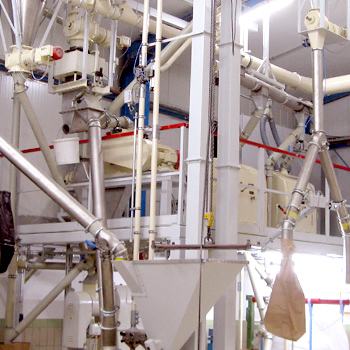
Roasted rye malt
Crushed rye malt, fine
Interquell cereals fine crushed rye malt is roasted and then crushed via a corrugating roller. The thermal process creates the typical malty roasted flavour. It is primarily used in bakery products. The reduced enzyme activity significantly extends the shelf life. Other available variants: „Rye malt flakes“ for decorating bakery products.
Nutritional information per 100 g:
Carbohydrates 7.6 g (polysaccharides 46.2 g, mono/disaccharides 2.9 g), protein 10.1 g, water 5.8 g, dietary fibre 3.8 g, minerals 1.5 g, fat 1.1 g
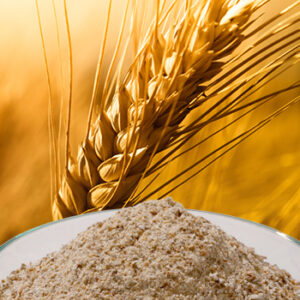
Specifications
Roasted wheat malt
Roasted wheat malt flour
Interquell cereals roasted wheat malt flour is made from wheat malt that is roasted to a light-brown colour and then milled. The thermal process creates the typical malty roasted flavour. It is primarily used as an addition to baking mixes to optimise the flavour of bakery products. The reduced enzyme activity significantly extends the shelf life.
Other available variants: „Organic roasted wheat malt flour“ from inspected organic farms, „Dark-roasted wheat malt flour“ that has been roasted for longer and has a darker colour (Pantone 466/467).
Nutritional information per 100 g:
Carbohydrates 76.0 g (polysaccharides 47.5 g, mono/disaccharides 3.7 g), protein 10.8 g, water 5.9 g, dietary fibre 4.4 g, minerals 1.5 g, fat 1.5 g

Specifications
Roasted barley malt
Dark-roasted barley malt flour
Interquell cereals dark-roasted barley malt flour is made from barley malt that is roasted to a dark-brown colour and then milled. The thermal process creates the typical roasted flavour. It is primarily used as an addition to baking mixes to give bakery products a dark colour (Pantone 476). The reduced enzyme activity significantly extends the shelf life.
Nutritional information per 100 g:
Carbohydrates 52.2 g (mono/disaccharides 0.3 g), dietary fibre 28.9 g, protein 10.4 g, water 3.6 g, fat 2.8 g, minerals 2.1 g
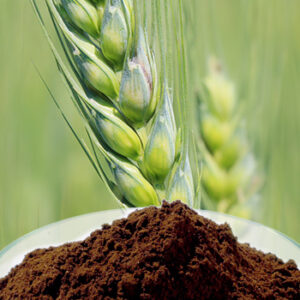
Specifications
Roasted rye
Bruised rye, micronised
Interquell cereals micronised bruised rye consists of rye grains that are heat-solubilised and then halved in a grain cutter. The hydrothermal process turns the rye into an „instant“ product, while still retaining the original shape of the grain. This shortens the soaking times needed when making whole-grain bread.
Nutritional information per 100 g:
Carbohydrates 63.6 g (polysaccharides 54.9 g, mono/disaccharides 0.8 g), dietary fibre 13.8 g, water 9.6 g, protein 9.2 g, minerals 2.0 g, fat 1.8 g (polyunsaturated fatty acids 0.8 g, monounsaturated fatty acids 0.4 g, saturated fatty acids 0.3 g)
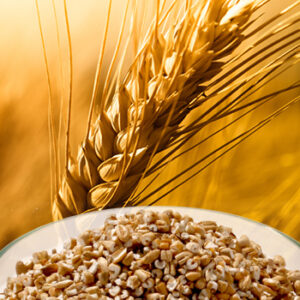
Specifications
Roasted wheat
Wheat flakes
Interquell cereals wheat flakes are made from wheat that is heated and then flaked until brownish via a roller. The hydrothermal process increases the digestibility of the product, as well as optimising it from the bacteriological viewpoint. Can be used as a flaked grain component for muesli.
Nutritional information per 100 g:
Carbohydrates 62.2 g (polysaccharides 59.3 g, mono/disaccharides 0.6 g), protein 11.9 g, water 11.5 g, dietary fibre 10.5 g, fat 2.0 g (polyunsaturated fatty acids 1.2 g, saturated fatty acids 0.4 g, monounsaturated fatty acids 0.3 g), minerals 1.8 g
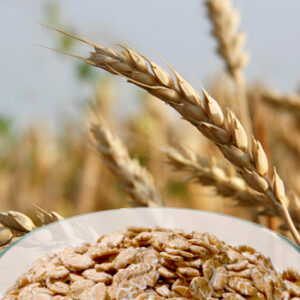
Specifications
